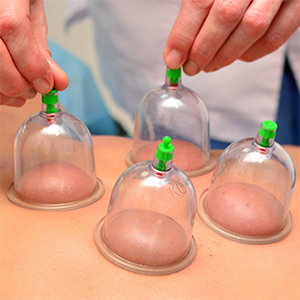
General Information
Shelley uses cupping as an adjunct to her myofascial practice. Cupping is that it is the inverse of massage/myofascial release. Rather than applying pressure to muscles, the suction uses pressure to pull skin, tissue and muscles upward.
You usually will feel a tight sensation in the area of the cup. Often, this sensation is relaxing and soothing. Depending on your comfort and assessment of the problem, cups may be moved around or left in place. They may remain on your body briefly or for longer amounts of time. Each treatment is unique to you on that particular day. One very common area to be cupped is the back, although cups work well on other areas, too — particularly on fleshy sections of the body.
Cupping causes the skin to temporarily turn red, blue or purple, especially if there is an injury or energetic blockage under the area that was cupped. The skin discoloration can last anywhere from a few days to a couple of weeks, but is rarely painful. Once the marks have cleared, the procedure can be repeated until the condition or ailment is resolved.
There are a number of methods of cupping — the two most common here in the U.S. are “fixed cupping” and “moving cupping.”